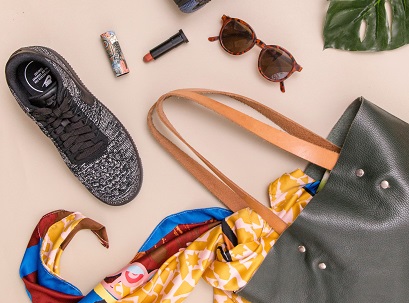Brian Walker
Let’s get physical, physical
I want to get physical
Let’s get into physical
– Olivia Newton John
What an amazing couple of years we have experienced in this sector – from the over-exaggeration of online dominance, to the growing understanding that the integration of online-to-physical retail is the real frontier. And now the landscape – whilst turbulent and transforming – is clearly showing us the horizon for ‘new retail’.
What is new retail? It is the marriage of online search and fulfilment with the shop experience, where the shop itself is an advertisement for the online portal and so on.
And it’s no surprise that it involves another buzzword. Whereas multichannel grew to become omnichannel, we’re now talking about ‘ROPO’, or research online, purchase offline.
ROPO is a retail acronym that a growing number of retail and consumer research and insights firms are shedding light on.
In their excellent 2019 report on retail, Colliers said: “The retail sector has outperformed the economy as a whole, which grew by 2.3 per cent over the year to December 2018.
“According to the Australian Bureau of Statistics (ABS), Australian consumers spent nearly $305 billion at physical stores in the 12 months to March 2019, which is 20 times more than the amount spent on online shopping of $15.6 billion.”
Now compare that to Amazon Australia, which reported only $106 million in revenue in FY18, its first full year of retail operation, according to Macquarie Research. This equates to 0.58 per cent of the Australian online retail market, according to ABS data, and about 0.033 per cent of the overall retail market.
if Amazon were a shopping centre it would be about the same size in turnover as Chullora Marketplace in Chullora, New South Wales or Gateway Plaza in Geelong, Victoria. In comparison, Australia’s largest shopping centre Chadstone generated a moving annual turnover (MAT) of $2.1 billion in 2018.
Colliers believes that the future of retail is neither exclusively online nor offline, but a mix of both, and that bricks-and-mortar retail will continue to play an essential role within an omnichannel retail world.
According to 2018 figures from Rakuten Marketing, 78 per cent of Australian consumers continue to shop both online and offline simultaneously.
CupoNation revealed that nine of the top 10 most visited Australian shopping sites in 2018 belonged to traditional bricks-and mortar-retailers. JB Hi-Fi led the pack with the most popular retail website attracting over 74 million local visits in 2018. The runner-up was Australia’s leading retailer of home improvement and outdoor living products, Bunnings Warehouse, which attracted almost 69 million visits to its online website over the 12-month period. The only online retailer to make the list was Kogan. Opening physical shops (like Catch Group) anytime soon Mr Kogan?
More importantly, the rise of e-commerce sales has not resulted in the cannibalisation of in-store sales as multi-channel retailers continue to report positive same-store sales growth across their physical stores.
Anecdotal evidence also suggests that there is a positive correlation between an increase in website traffic and a rise in physical footfalls by omnichannel retailers. This is consistent with findings from Retail Drive, which showed that 67 per cent of consumers would research products online before purchasing them in bricks-and-mortar stores.
Our data suggests that ROPO will become a significant trend that dictates the purchasing behaviour of Australian consumers, particularly of the millennial and digital native generation.
Major e-commerce retailers have also realised the tremendous benefit of having a physical presence and are making the leap from clicks to bricks. Amazon is a good case in point. The global online retail giant has been rolling out a chain of convenience stores called Amazon Go across the US.
These stores feature the latest retail technologies, including biometric recognition, sensors and deep learning algorithms to assist and automate much of the purchasing process.
Amazon is reportedly planning to open up to 3000 stores across the US by 2021. With an average area of 200sqm per store, this would be equivalent to 600,000sqm of space. This will be in addition to Amazon’s other physical retail offerings, including: Amazon Books, Amazon 4-Star stores and Amazon-owned Whole Foods supermarkets, which continue to expand rapidly.
On the other side of the Pacific, Chinese multinational e-retailer Alibaba is also extending its push into brick and mortar retail. Its proprietary grocery retail chain Freshippo, or Hema.
Hema is a part of Alibaba’s ambitious ‘new retail’ strategy, which sees the world’s largest e-commerce company investing almost $10 billion, so far, into bricks-and-mortar retailers. They include home improvement chain Easyhome, electronics retailer Suning, food retailer Sun Art and a partnership with one of the largest retailers in China, Bailian Group, which operates 4,700 stores nationally. The opening of Alibaba’s first physical shopping mall in Hangzhou called More Mall marks another big leap in its effort to blend both the digital and physical retail worlds.
Amazon and Alibaba aren’t the only traditionally pureplay e-commerce companies embracing the trend of smart and borderless retailing. EBay, Bonobos, Warby Parker, Untuckit, Casper, Hointer, Dollar Shave Club and many more once online-only players are making concerted efforts to gain a presence in the bricks-and-mortar retail space.
Whilst many of these examples have been largely concentrated in the US and China, the two largest retail markets in the world, we believe these trends will soon catch up with the rest of the world and particularly Australia over the coming years.”
As you can see, to think in channels is now increasingly myopic, to build a ROPO model is the key now.
Oh, and by the way – 75 per cent of all flagships of specialty retailers I visited in Europe and Tokyo in the last six months had click-and-collect offers. They clearly understand ROPO.
First Published in Inside Retail on June 25 2019

